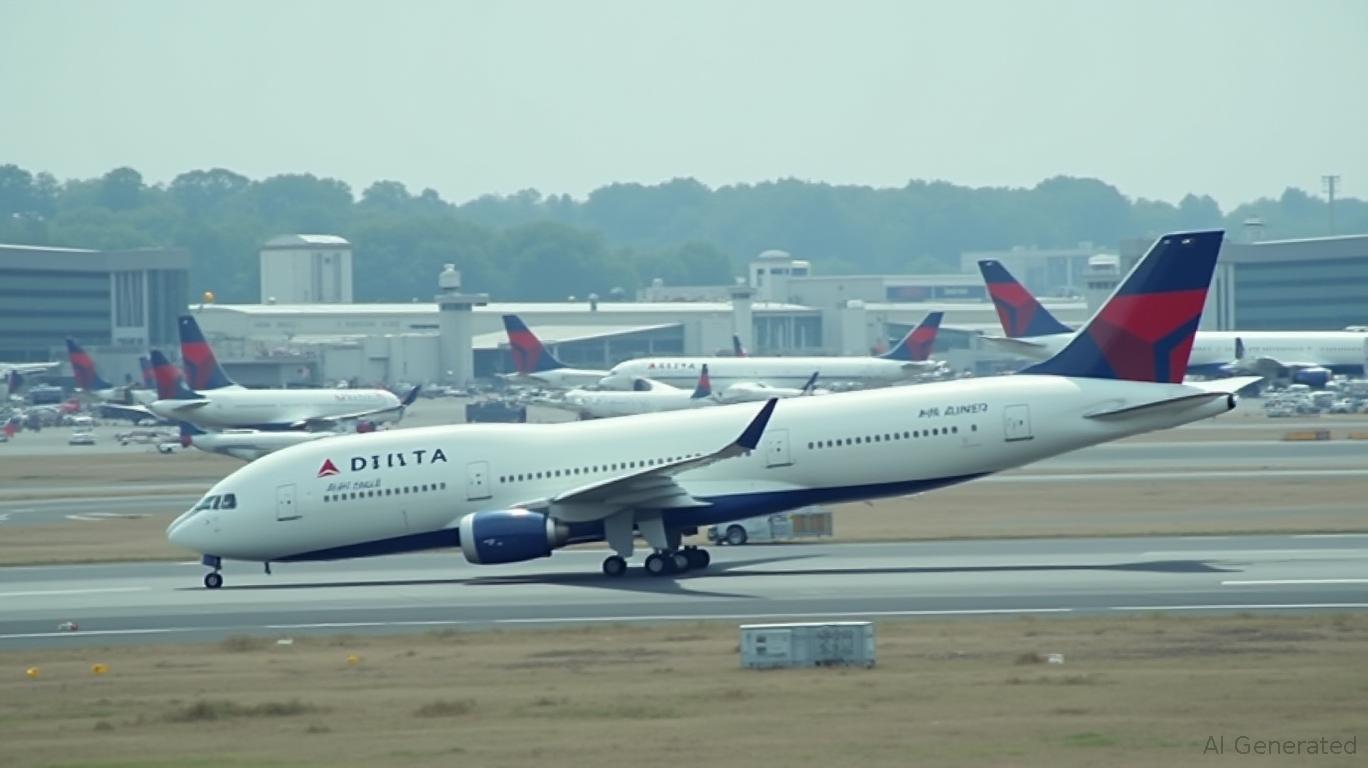Delta Air Lines: Navigating Technical Turbulence and Unlocking Value in Aviation's New Reality
The aviation sector has long been a barometer of global economic health, but
(DAL) now faces a unique crossroads: its ability to recover from recurring technical disruptions and maintain investor confidence will determine whether its stock becomes a contrarian buy or a cautionary tale.
The Storm Clouds: Technical Failures and Their Ripple Effects
Delta's July 2024 software outage—triggered by a faulty CrowdStrike update—exposed vulnerabilities in its reliance on third-party technology. Over 7,000 canceled flights, $550 million in losses, and a class-action lawsuit over passenger refunds underscored the cascading risks of modern aviation's digital backbone. While Delta has since stabilized operations, the lingering legal battle with CrowdStrike and ongoing staffing constraints at key hubs like Newark (EWR) reveal systemic fragility.
The FAA's 2025 restrictions at EWR, compounded by aging infrastructure and telecommunication outages, further strain Delta's operations. These factors have contributed to a 12% decline in DAL's stock price year-to-date, as investors weigh short-term risks against long-term resilience.
Financials: A Glimmer of Hope Amid Uncertainty
Despite operational headwinds, Delta's March 2025 financial results offer a mixed but cautiously optimistic picture:
- Operating revenue: $14.04 billion (down 3% YoY but in line with revised guidance).
- Net earnings: $240 million (vs. $1.1 billion in 2024, reflecting both lower demand and lingering costs from disruptions).
- Operating margin: 4.0% (a contraction from 8.5% in 2024, signaling margin pressure but still above the 2023 trough of 1.2%).
Crucially, Delta's P/E ratio of 8.5x remains attractively low compared to peers (UAL: 12x, AAL: 10x), suggesting the market has already discounted much of the operational risk. Meanwhile, its $12.8 billion in cash and equivalents provide a critical buffer for future shocks.
Why Investors Should Consider a Contrarian Bet Now
Operational Recovery and Mitigation:
Delta's post-outage measures—including enhanced cybersecurity protocols, real-time passenger communication tools, and contingency funds for stranded travelers—signal a proactive approach to risk management. The airline's $50 million fuel savings during the 2024 outage also highlight cost discipline.Structural Tailwinds:
- International Travel Resilience: Delta's 8% revenue growth in international routes (vs. flat domestic demand) positions it to capitalize on post-pandemic demand recovery.
Capacity Discipline: A planned flat Y/Y available seat mile growth for 2025 reduces overexposure to economic slowdowns.
Legal and Regulatory Risks Are Manageable:
While the CrowdStrike lawsuit remains unresolved, Delta's $550 million loss estimate includes provisions for litigation costs. Meanwhile, the FAA's infrastructure upgrades at EWR (e.g., fiber-optic replacements) should reduce future delays.
Risks to Consider
- Litigation Uncertainty: A CrowdStrike settlement could either reduce risks or impose unexpected costs.
- Economic Downturn: A recession could further depress business travel demand, Delta's highest-margin segment.
The Bottom Line: Buy the Dip, but Stay Vigilant
Delta's stock trades at a 50% discount to its 2022 peak and offers a compelling entry point for investors willing to bet on its turnaround. The airline's fortress balance sheet, disciplined cost controls, and improving operational protocols position it to outperform peers in a recovery scenario.
Action Item: Consider a 5% allocation to DAL with a trailing stop-loss at $25 (below its 52-week low). Monitor closely for FAA progress on EWR, CrowdStrike litigation updates, and summer travel demand trends.
In aviation, turbulence is inevitable—but for investors who stay steady, the long-term ascent remains intact.
This analysis is for informational purposes only and should not be considered financial advice.

Comments
No comments yet